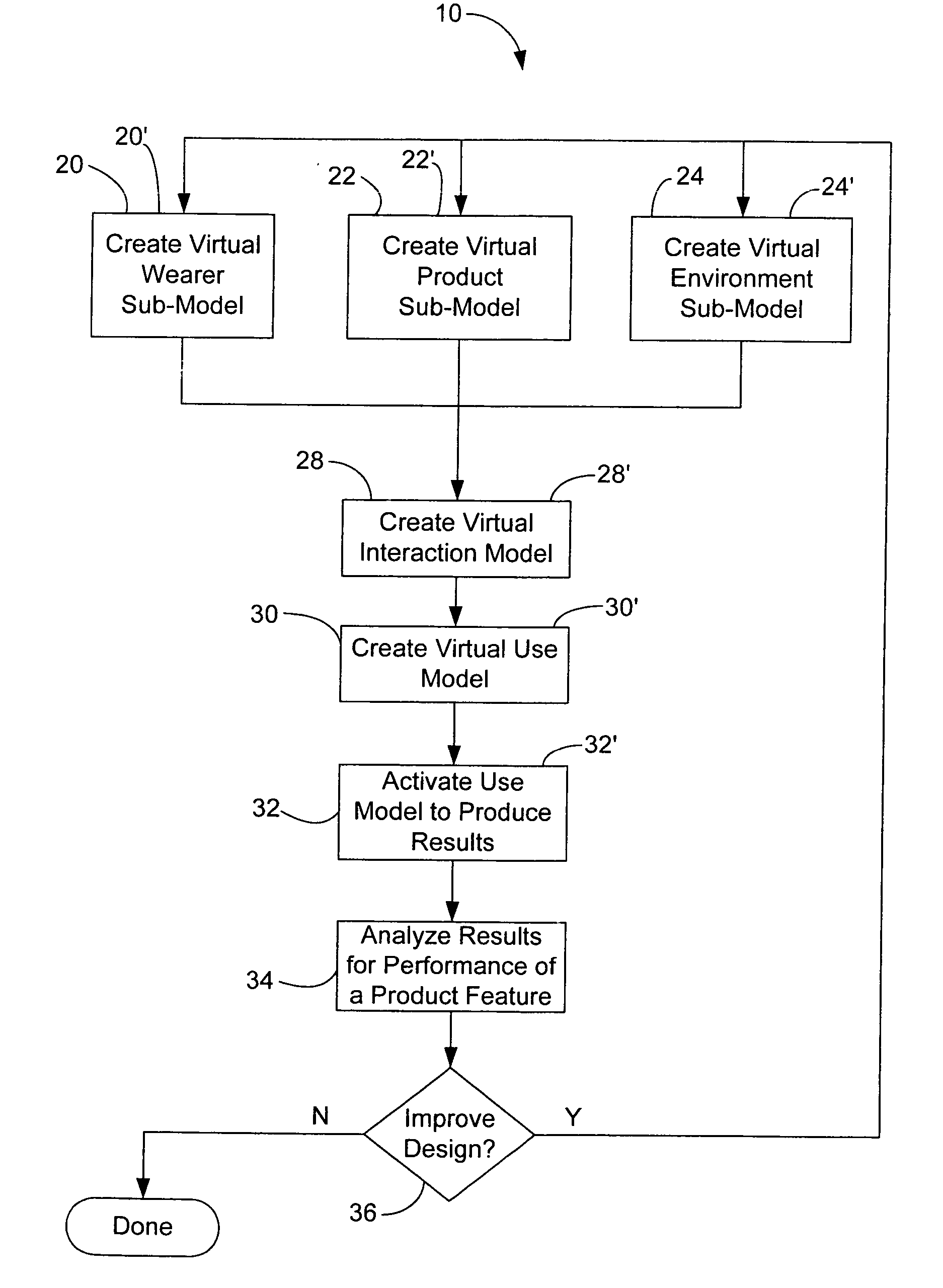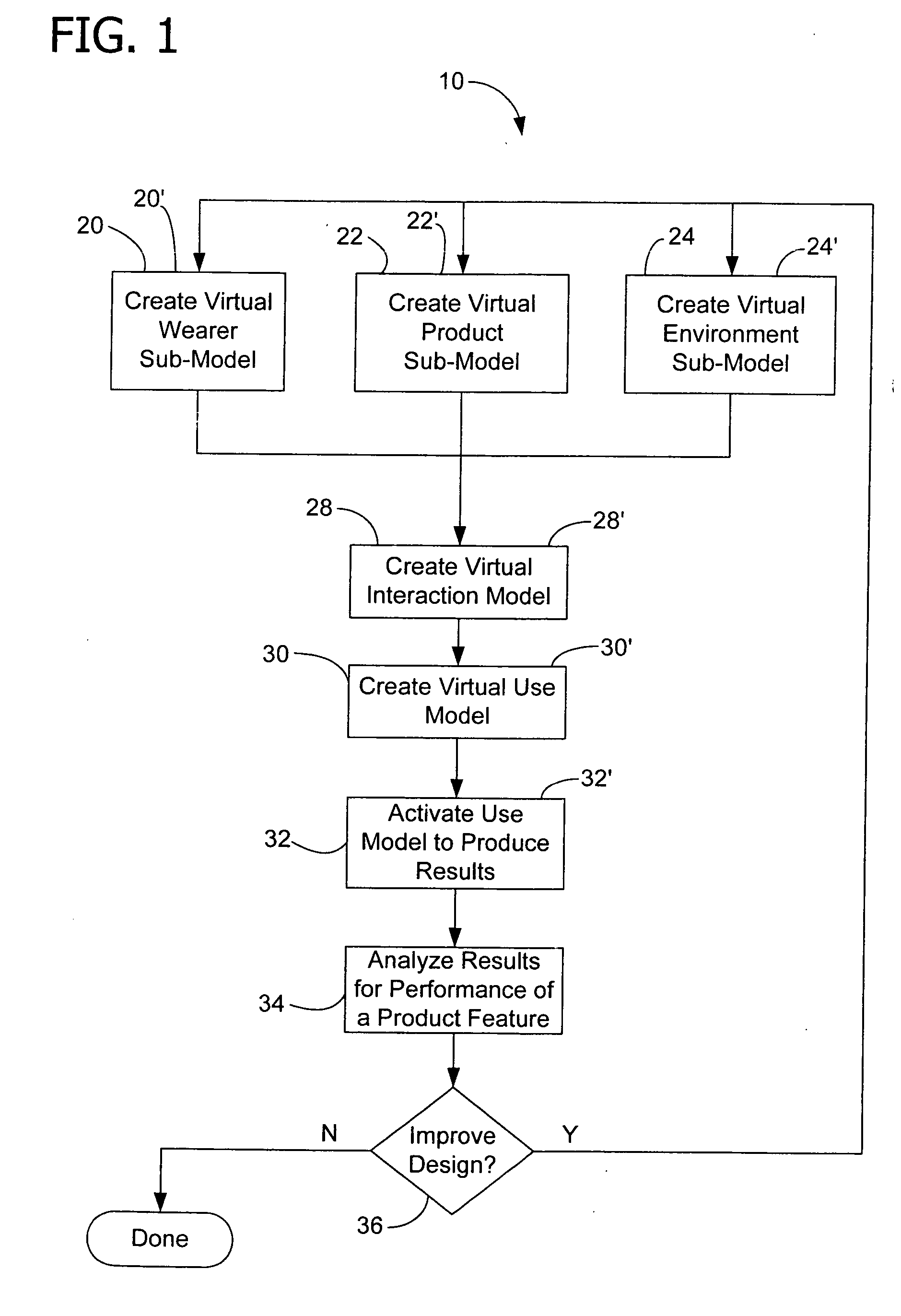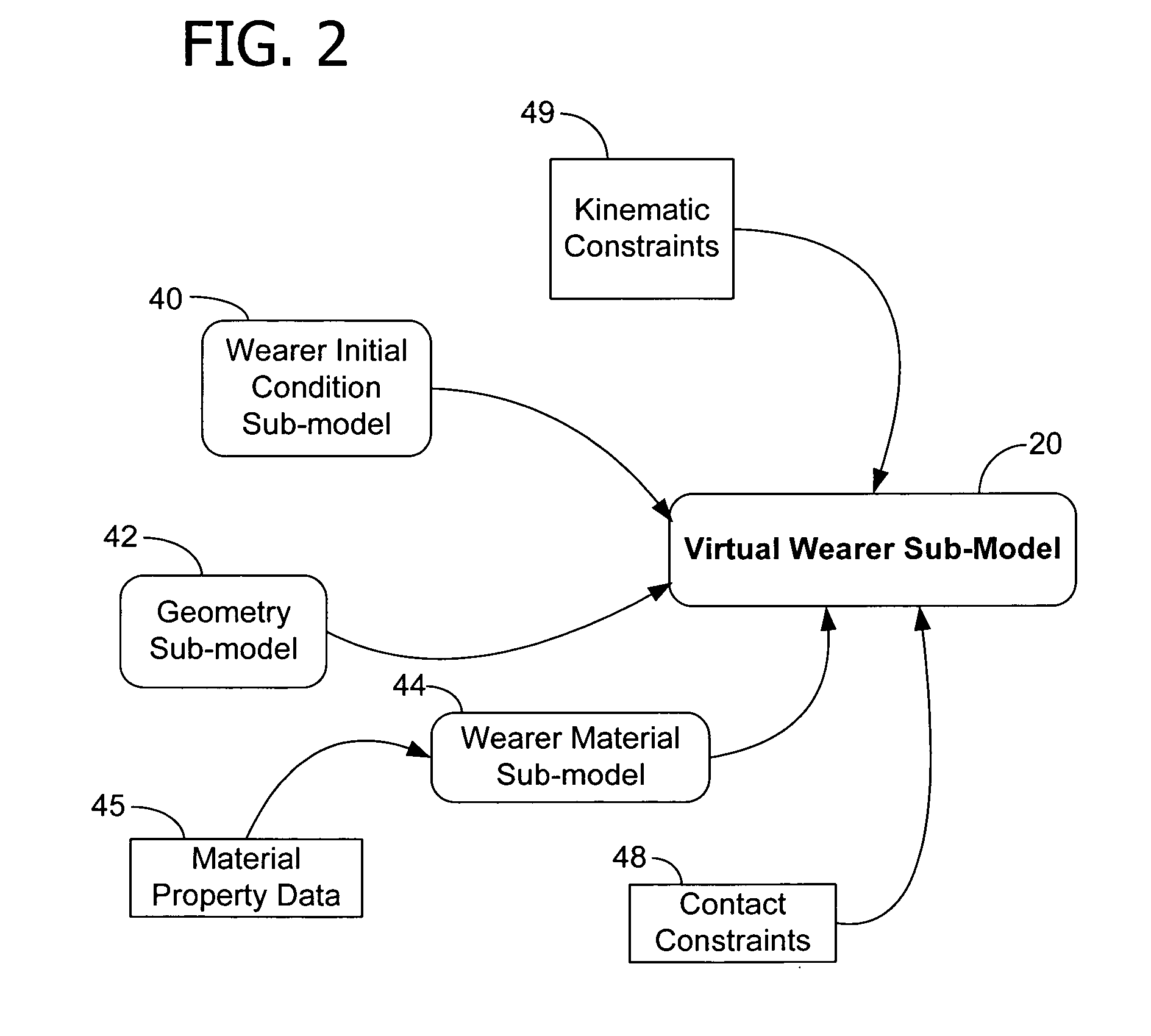Method of evaluating the performance of a product using a virtual environment
a virtual environment and product technology, applied in the field of article evaluation, can solve problems such as product failure, inability to analyze easily, and aggravating difficulty in finding a satisfactory article configuration
- Summary
- Abstract
- Description
- Claims
- Application Information
AI Technical Summary
Problems solved by technology
Method used
Image
Examples
example 1
Diaper Embodiments
embodiment 1a
[0104] The first diaper embodiment described herein is a product only model used to evaluate deformation and stresses around the leg and containment flap elastic regions. FIG. 13 illustrates an exemplary diaper, indicated generally at 111, with typical fasteners and elastics. For example, the diaper 111 has a cover 112, an absorbent body 113, fasteners 114, fastener elastics 115, containment flaps 117 and leg elastics 118. Initially, a plane of symmetry along the long axis of the diaper was implemented to reduce computer run times during the initial steps of development. Later, the plane of symmetry constraint was removed by mirroring the diaper about the plane of symmetry. When the mirroring was implemented, modifications were also made to the loading conditions (i.e., forces necessary to apply the diaper), kinematic instructions, and contact instructions. Appendix 1 provides an example of the input files for the diaper embodiments. Diaper embodiment 1a focused on the leg and conta...
embodiment 1b
[0107] The second embodiment included a more detailed product and a wearer located in a static position. In this model, contact pressures during product application and deformation of the product were investigated. The increased detail in the product included modeling the geometry and properties of an absorbent core, fastener elastic, and a fastener in addition to the leg elastic, containment flap elastic, and containment flap material modeled in embodiment 1a.
[0108] Material property data of the updated diaper may be found in Table 2. The elastics (containment flap, leg, and fastener elastic) were modeled as Neo-Hookean hyperelastic materials, which means that the materials are incompressible and show non-linear behavior. To accurately describe the non-linearity in these materials, stress vs. strain data was directly input to the model. All of the elements except the leg and containment flap elastic were modeled as S4Rs. These elements allow a user to represent many types of mater...
PUM
 Login to View More
Login to View More Abstract
Description
Claims
Application Information
 Login to View More
Login to View More - R&D
- Intellectual Property
- Life Sciences
- Materials
- Tech Scout
- Unparalleled Data Quality
- Higher Quality Content
- 60% Fewer Hallucinations
Browse by: Latest US Patents, China's latest patents, Technical Efficacy Thesaurus, Application Domain, Technology Topic, Popular Technical Reports.
© 2025 PatSnap. All rights reserved.Legal|Privacy policy|Modern Slavery Act Transparency Statement|Sitemap|About US| Contact US: help@patsnap.com



